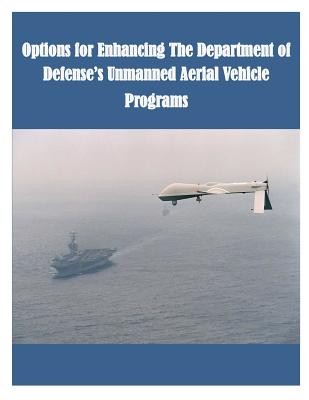
- We will send in 10–14 business days.
- Author: Congressional Budget Office
- Publisher: CreateSpace Independent Publishing Platform
- Year: 2014
- Pages: 80
- ISBN-10: 1500868841
- ISBN-13: 9781500868840
- Format: 21.6 x 28 x 0.4 cm, softcover
- Language: English
- SAVE -10% with code: EXTRA
Options for Enhancing The Department of Defense's Unmanned Aerial Vehicle Programs (e-book) (used book) | bookbook.eu
Reviews
Description
Unmanned aerial vehicles (UAVs) are remotely piloted or self-piloted aircraft that can carry cameras, sensors, communications equipment, or other payloads. The Department of Defense has used UAVs in military operations since the 1950sbecause they can provide reconnaissance, surveillance, and intelligence of enemy forces without risking the lives of an aircrew. In recent years, interest in the many capabilities of UAVs has been growing among the armed services. At the same time, the services have been having difficulty actually acquiring and deploying the UAVsthey have tried to develop. As a result, many of those development programs have been cancelled (see Summary Table 1). The Department of Defense (DoD) hopes to do better with the four UAVs that are now under development or in initialproduction: Predator, Darkstar, Global Hawk, and Outrider.In this paper, the Congressional Budget Office (CBO) examines DoD's unmanned aerial vehicle programs, reviewing their missions, requirements, and development process. It also focuses on the strengths and weaknesses of the Advanced Concept Technology Demonstration (ACTD) process being used to develop them. Criticisms of the new unmanned aerial vehicles have led someMembers of Congress to question whether reasonable alternatives exist to DoD's plans for acquiring and using UAVs. This paper examines five options for the various UAV programs. Those alternatives illustrate other potential configurationsof the future UAV force-each of which would have advantages and disadvantages that would differ from those of the current combination of programs.
EXTRA 10 % discount with code: EXTRA
The promotion ends in 17d.14:06:13
The discount code is valid when purchasing from 10 €. Discounts do not stack.
- Author: Congressional Budget Office
- Publisher: CreateSpace Independent Publishing Platform
- Year: 2014
- Pages: 80
- ISBN-10: 1500868841
- ISBN-13: 9781500868840
- Format: 21.6 x 28 x 0.4 cm, softcover
- Language: English English
Unmanned aerial vehicles (UAVs) are remotely piloted or self-piloted aircraft that can carry cameras, sensors, communications equipment, or other payloads. The Department of Defense has used UAVs in military operations since the 1950sbecause they can provide reconnaissance, surveillance, and intelligence of enemy forces without risking the lives of an aircrew. In recent years, interest in the many capabilities of UAVs has been growing among the armed services. At the same time, the services have been having difficulty actually acquiring and deploying the UAVsthey have tried to develop. As a result, many of those development programs have been cancelled (see Summary Table 1). The Department of Defense (DoD) hopes to do better with the four UAVs that are now under development or in initialproduction: Predator, Darkstar, Global Hawk, and Outrider.In this paper, the Congressional Budget Office (CBO) examines DoD's unmanned aerial vehicle programs, reviewing their missions, requirements, and development process. It also focuses on the strengths and weaknesses of the Advanced Concept Technology Demonstration (ACTD) process being used to develop them. Criticisms of the new unmanned aerial vehicles have led someMembers of Congress to question whether reasonable alternatives exist to DoD's plans for acquiring and using UAVs. This paper examines five options for the various UAV programs. Those alternatives illustrate other potential configurationsof the future UAV force-each of which would have advantages and disadvantages that would differ from those of the current combination of programs.


Reviews